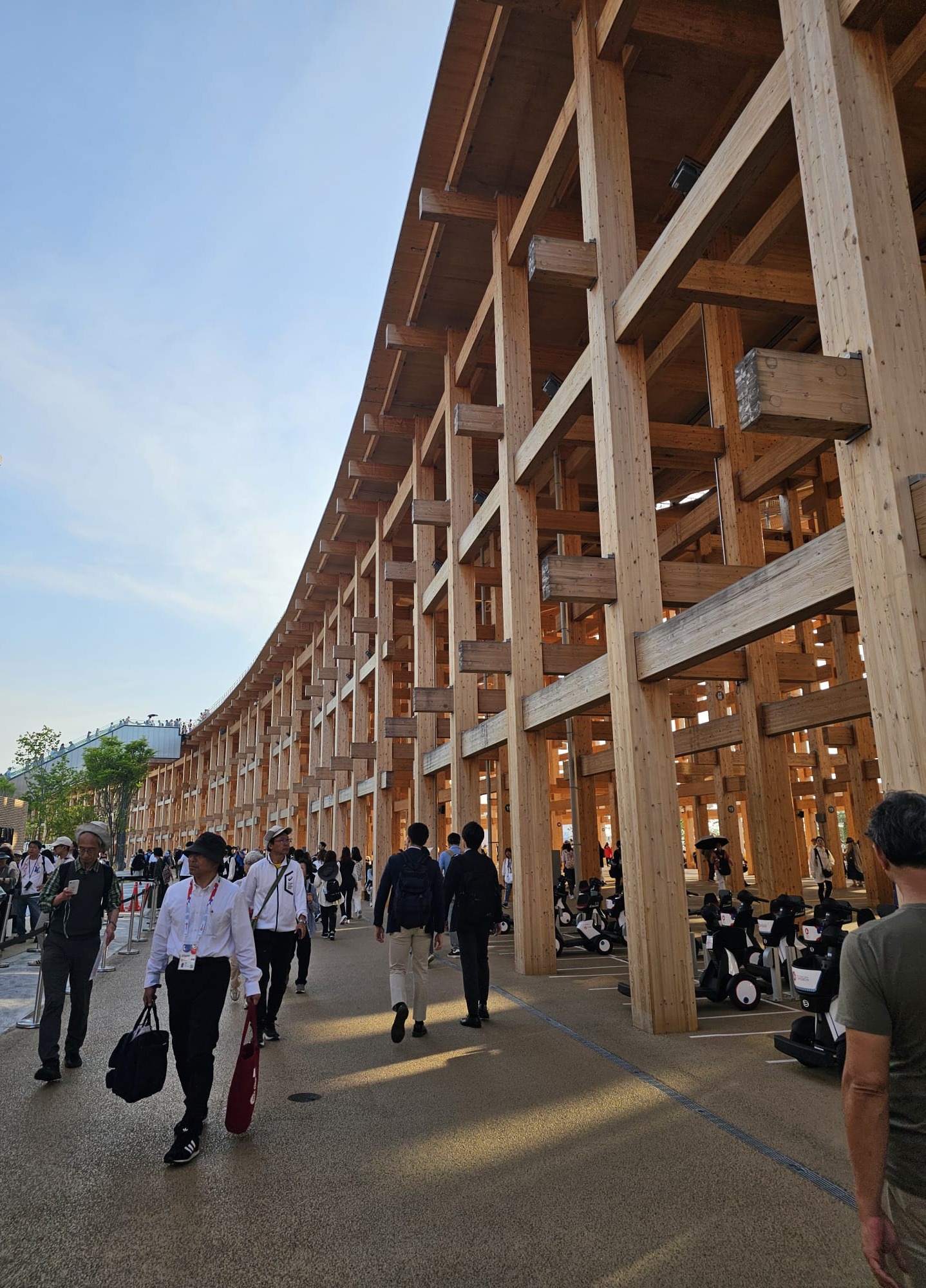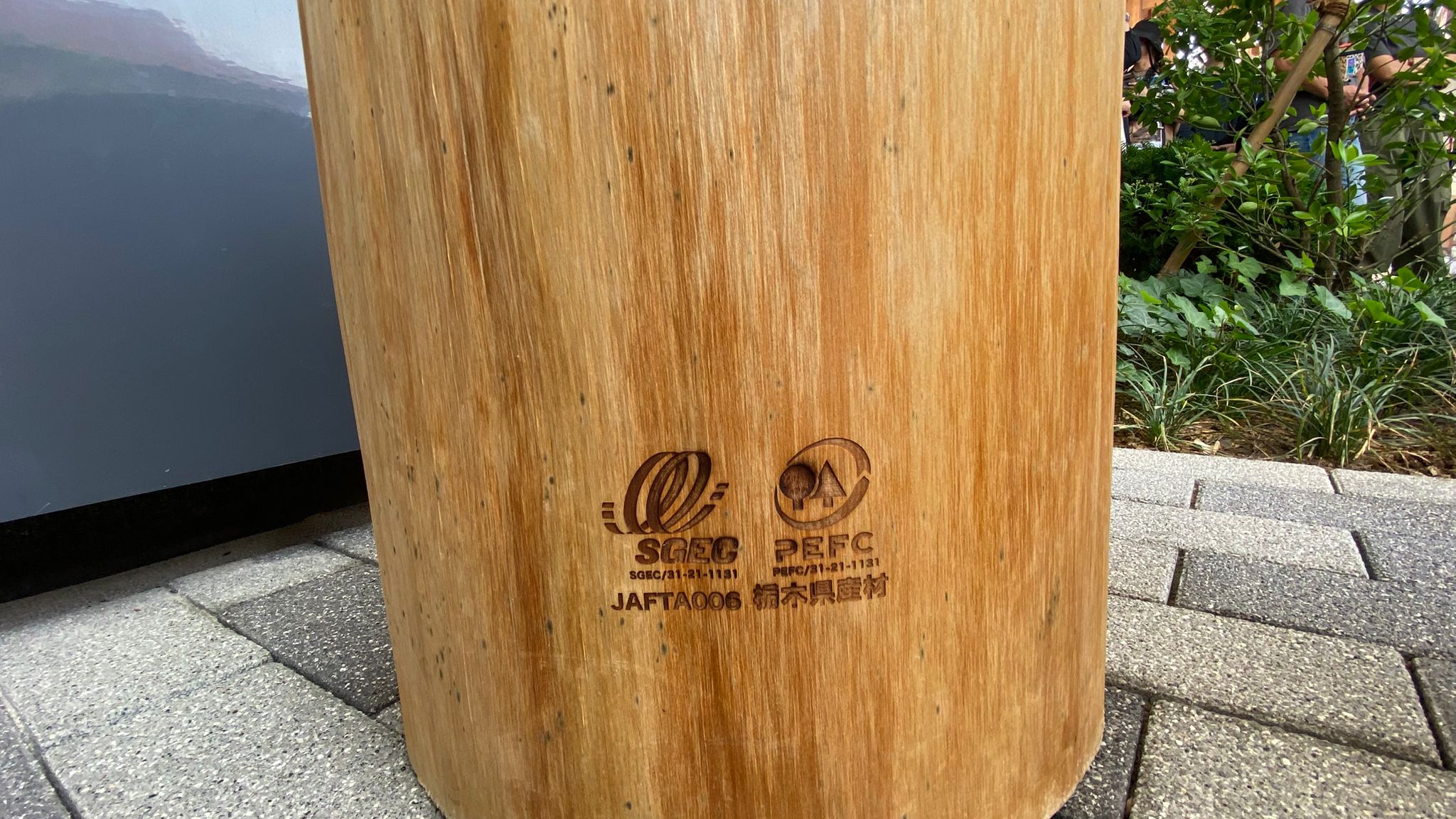Osaka World Expo 2025 and Japan continue to inspire
With over one million visitors already and now at the halfway point of its six-month duration, Osaka World Expo 2025 continues to impress global audiences, highlighting innovation, sustainability, and PEFC-certified timber.
Osaka World Expo 2025 and Japan continue to inspire
15 July 2025 Sustainable construction
With over one million visitors already and now at the halfway point of its six-month duration, Osaka World Expo 2025 continues to impress global audiences, highlighting innovation, sustainability, and PEFC-certified timber.

National pavilions from countries including Austria, Czechia, and Italy have featured PEFC-certified wood in their building designs, but one of the Expo’s most striking installations is ‘The Grand Ring’.
Officially recognised by Guinness World Records as the world’s largest wooden architectural structure, it also incorporates PEFC-certified material.
Measuring 2km in circumference and nearly 700m in diameter, it features 61,035.55m² of timber, primarily sourced from Japanese cedar and cypress but 30% (around 7,000m3) of the structure’s wood is PEFC-certified Scots pine.
From the start of the planning for Osaka Expo, organisers have emphasised the importance of sustainable construction practices, instructing architects and designers to prioritise deconstruction, lightweight materials, and reusability of structures. The use of legally sourced timber is also a fundamental principle of Expo’s procurement policy, in line with its Code for Sustainable Procurement and green vision for decarbonisation.
Timber guidance specified that material should be sourced through ‘procedures in accordance with the forest-related laws and regulations of the country or territory where it is harvested’, specifically legal compliance, forest management plans, environmental conservation, respect for indigenous and local rights and worker safety. PEFC certification provides clear and credible assurances that these aspects are considered in its chain of custody and supply of its forest-based products.
PEFC certified material is not only a part of the Expo structures, but also part of the staff uniforms. Uniforms are made from Mokuito – a natural fibre derived from thinned wood from SGEC/PEFC-certified forests and developed by Osaka-based Washi no Nuno Co., Ltd. The ‘wood thread’ is created by extracting cellulose from domestic softwoods including Japanese cedar and cypress, then enabling cloth to be made from Japanese Washi paper by twisting into thread.
This innovative material requires no chemical treatment, is biodegradable, and is environmentally friendly. The yarn is procured from four SGEC FM certified forests in Osaka Prefecture (Kawachi Nagano City), Tokushima Prefecture (Kamikatsu Town), Nagano Prefecture (Neba Village), and Kumamoto Prefecture (Amakusa City and Oguni Town).

Outside the Australian and Luxembourg Pavilions weary visitors were also able to rest a while on SGEC/PEFC certified wooden stools, which were specially created for the show.
Amongst the many events that have recently taken place at Expo, was the Pocket Talk program organised by the Malaysian Timber Certification Scheme (MTCS), our national member for Malaysia. This outlined how PEFC and MTCS certification supports sustainable forest management globally. MTCS is accepted under Japan’s Clean Wood Act and promotes Malaysia’s commitment to sustainable forest management and legal timber practices.
Across Japan, the use of SGEC/PEFC-certified timber continues to grow. Recent examples include the work completed at Kanuma Hall City Council Building using 235m³ of certified cedar, bike racks at Seibu Chichibu rail station, Chichibu and the Roadside Station Hojo, built with local SGEC/PEFC-certified wood from towns in central Tottori Prefecture, including Hokuei Town. From architecture to apparel, Japan’s commitment to sustainable forestry and certified timber continues to set a global example, making Osaka Expo 2025 a celebration of culture, technology, and environmental responsibility.